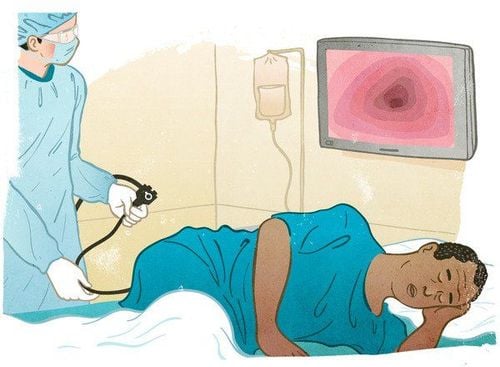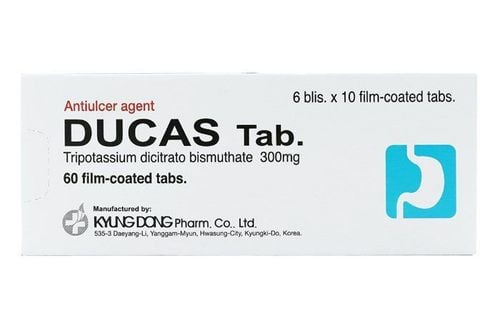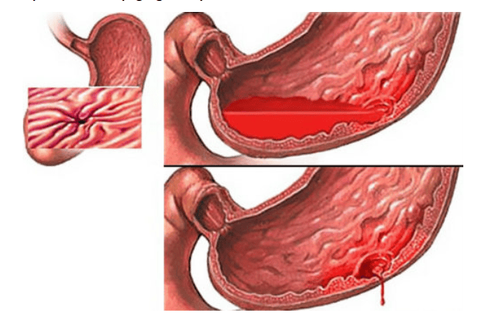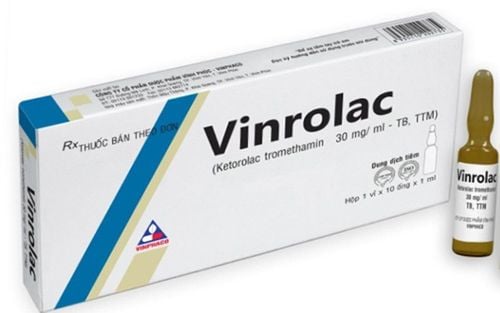This is an automatically translated article.
The article is professionally consulted by Master, Doctor Vu Huy Binh - Department of Medical Examination & Internal Medicine - Vinmec Hai Phong International General Hospital.
Lower gastrointestinal bleeding is one of the common causes of hospitalization for digestive diseases. Colonoscopy is the initial procedure used in nearly all patients hospitalized for lower gastrointestinal bleeding.
1. Definition
Lower gastrointestinal bleeding is bleeding from the gastrointestinal tract from the angle of Treitz to the anus. Lower gastrointestinal bleeding accounts for about 20% of cases of gastrointestinal bleeding. 95% of cases of lower gastrointestinal bleeding originate from the colon and the remainder from the small intestine. Clinical manifestations may be melena or fresh bloody stools, which can range from mild insignificant to shock requiring resuscitation. Lower gastrointestinal bleeding is common in men and increases with age, probably related to diverticulitis and vascular disease in older men.2. Cause
Diseases of diverticulum colon and small intestine. Vascular dysplasia Colon, benign or malignant neoplasm Colitis, small intestine anorectal disease Other less common causes: Small bowel aortic stenosis, ruptured abdominal aortic aneurysm, hemophilia , Thrombocytopenia, anticoagulants, decreased platelet function, chronic renal failure.
3. Symptoms of lower gastrointestinal bleeding
3.1 Clinical Passage of bright red blood mixed with stool or after stool. Pass black and red bloody stools if the bowel movement time is sufficient. Sometimes blood flow profusely in the esophagus, stomach, duodenum also bright red blood, need to distinguish. Stagnant blood in the intestines will show black stools with a fishy smell. 3.2 Injury Vital signs: Pulse, blood pressure varies depending on bleeding status and amount of blood loss. Anemia: blue skin, pale mucous membranes. Rapid shallow breathing if there is a lot of blood loss. Consciousness disturbances: lethargy, coma if anemia is severe, and shock if not treated promptly. 3.3 Bleeding degree Mild bleeding: blood loss of 250ml, no effect on general condition, vital signs unchanged, blood parameters normal. Moderate bleeding: blood loss of 250 -500 ml, affecting the whole state, M-HA changes. Heavy bleeding: blood loss of more than 1000ml, change in general condition: blue skin, pale mucous membranes, fatigue, impaired consciousness.4. Laboratory tests
Colonoscopy: Colonoscopy is the initial procedure applied to nearly all patients hospitalized for lower gastrointestinal bleeding because it serves diagnostic and therapeutic purposes. Endoscopy is useful in cases of mild or moderate bleeding. The case of massive bleeding is difficult to observe. Endoscopy showed lesions, bleeding site. Easily identify diverticulitis, tumor, or inflammation in the colon. Particularly, vascular dysplasia lesions are more difficult to identify, especially in unstable patients with mesenteric vasospasm.
5. Regimen for treatment of lower gastrointestinal bleeding
Treatment is similar to other cases of gastrointestinal bleeding: medical resuscitation is the priority, then it is necessary to determine the bleeding site, the cause of the bleeding and specifically treat this cause.5.1 Diverticulosis is the most common cause of severe lower gastrointestinal bleeding. Usually in the elderly, but only 3-15% of cases of diverticulitis cause bleeding. Diverticulosis is more common in the left colon, but bleeding is more common in the right diverticulum.
Through endoscopy, it is possible to simultaneously diagnose hemostasis with epinephrine injection, electrocautery or clipping.
If bleeding continues, angiography and embolization or surgery can be performed. When surgery allows blind hemicolectomy. The risk of continued bleeding after surgery is 1/2, and the mortality rate with hemorrhagic emergency colectomy is 30%.
5.2 Vascular Dysplasia Accounting for 40% of cases of lower gastrointestinal bleeding, is dilation of blood vessels in the submucosa of the intestine. It is evenly distributed in both sexes and usually occurs in patients over 50 years of age. Dysplasia can occur in the small and large intestines but most often causes bleeding in the right colon, especially the cecum. Often causes chronic bleeding, > 15% may cause major bleeding. Responds well to interventions such as sclerotherapy, electrocautery, vasopressors, and embolization. If failure or bleeding recurs, surgery is indicated and usually right colectomy is sufficient.
5.3 Colon and rectal tumors Rarely cause heavy bleeding, often oozing bleeding causes chronic anemia. Polyps also cause bleeding, but bleeding is common after polypectomy. Treatment is surgery. If polyps can be treated through colonoscopy.
5.4 Anal disease Common causes of bleeding are hemorrhoids, anal fissures, and tumors. 5-10% of hemorrhoids cause acute bleeding, showing fresh blood with prolapsed hemorrhoids. Treat with procedures or surgery.
5.5 Inflammatory disease Colitis can take many forms, including: inflammatory bowel disease (Crohn's disease, ulcerative colitis), infectious colitis, post-radiation anal inflammation, or ischemia.
Ulcerative colitis causes more gastrointestinal bleeding than Crohn's disease (15% and 1%). This is a disease of the lining of the rectum but also the entire colon. Medical therapy with steroids, 5-aminosalicylic acid. Indications for surgery are rare. Crohn's disease rarely causes bleeding, if it does, usually affects the colon. Medical treatment is the mainstay. Infective colitis can cause hemolysis. Diagnosis is based on history and stool culture. Internally medical treatment. Post-radiation anal inflammation is common after radiation therapy for cancers of adjacent organs. Internally medical treatment.

6. Why should lower gastrointestinal bleeding be treated by endoscopic techniques at Vinmec International General Hospital?
Vinmec International General Hospital is equipped with modern machinery such as Avance CS2 anesthesia machine, GE's R860 ventilator, endoscope. At Vinmec, applying clip-on endoscopic hemostasis technique in gastrointestinal bleeding, performed by a team of experienced doctors.
Please dial HOTLINE for more information or register for an appointment HERE. Download MyVinmec app to make appointments faster and to manage your bookings easily.














